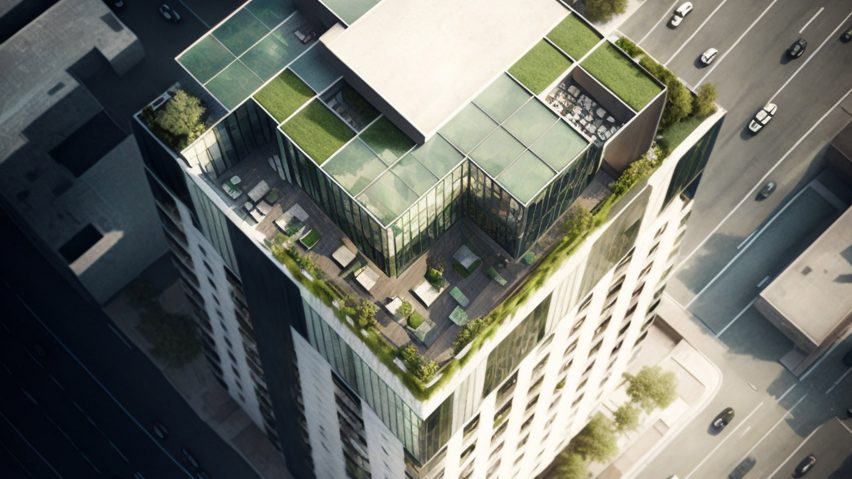
Hickok Cole uses ChatGPT to design 24-storey mixed-use building
Architecture studio Hickok Cole has used AI chatbot ChatGPT to design a large mixed-use building with a green roof and a swimming pool as a research project.
Hickok Cole project architect Jack Lynch said the experience had left him "super excited" about the potential of AI tools to assist the process of designing buildings.
The ChatGPT-designed building, which was designed for an unspecified downtown urban site and does not have a client, would be 24 storeys high and contain retail, office, residential, hotel and library space.
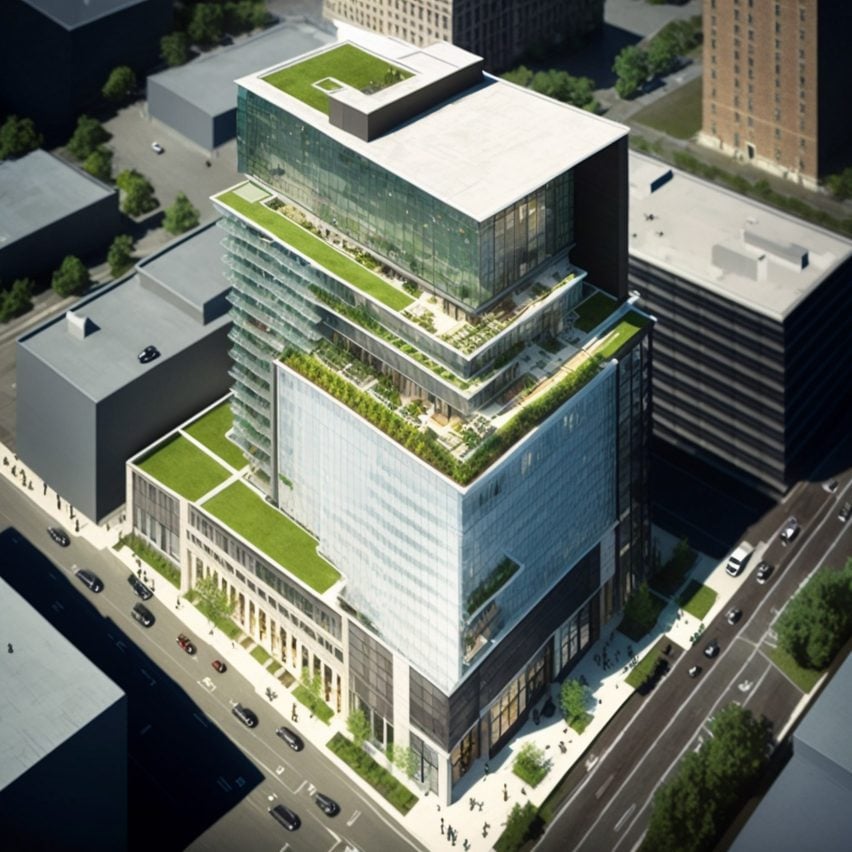
He began by discussing the program for the project, followed by its form, then the appearance of the facade, then materials selection.
"I essentially asked ChatGPT to design a building, but I did it in a way that I thought was step-by-step under the guidance of an architect" he told Dezeen.
Launched in November 2022 by OpenAI, ChatGPT is a large language model AI system that uses internet data to respond to users' queries in a dialogue format.
Lynch began using ChatGPT while researching new approaches to vertical mixed-use development as part of Hickok Cole's iLab microgrant programme.
"It started on a whim, actually," he said. "I was really drawn to the conversational style of ChatGPT, so I popped it open and decided to try and gauge how it could be used."
Working with ChatGPT similar to working with young designer
The resulting building would have dark stone cladding on its lower floors, glazed walls on most of the facade and perforated metal panels on the upper levels.
"This combination of materials would allow for a modern and sleek aesthetic while also providing some variety in texture and depth to the building's overall appearance," ChatGPT said during its discussion with Lynch.
"The building's form is relatively simple and efficient, extruding straight up with some subtle gestures or articulations added to the building's form to break up the massing and add visual interest," it added.
Parts of the roof would be stepped back to create a garden, which the chatbot said would help "create a more interesting roofline".
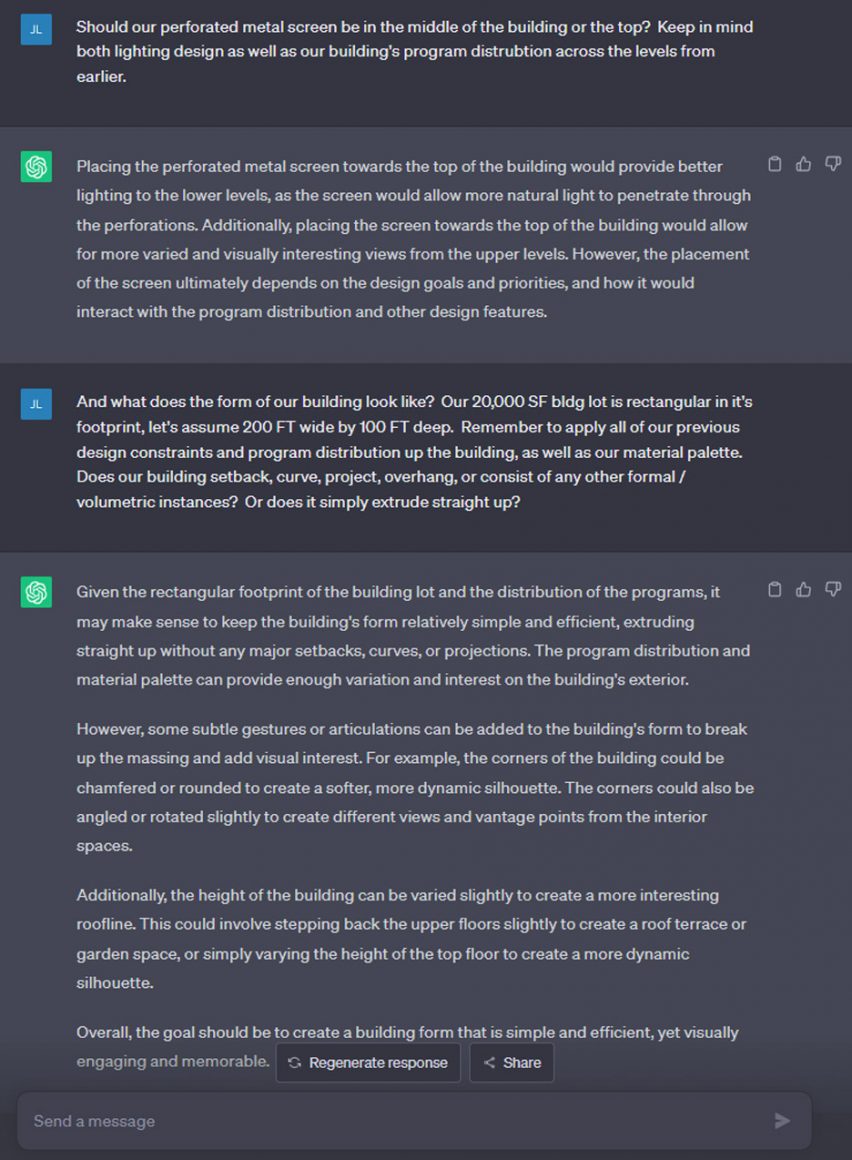
To create visualisations of the project, prompts generated using ChatGPT were inputted into text-to-image AI tool Midjourney.
"What I tried to do is create a rapport with the AI engine, and every time it suggested ideas I said, 'alright, let's build off that', in the same way that a supervisor would work with a young designer," Lynch explained.
"And so every time we stepped forward, it would flesh out the design a bit more."
ChatGPT developed and evolved the design
Lynch introduced new constraints to the project one-by-one, with ChatGPT responding by coming up with its own design ideas.
"The bot itself would introduce all of these architectural features," said Lynch. "So it would say it would have a double height space here, it would implement natural light in these locations, which is not what I asked for. I would just ask it to reiterate the program, I would add a new constraint, and it would develop it and evolve it."
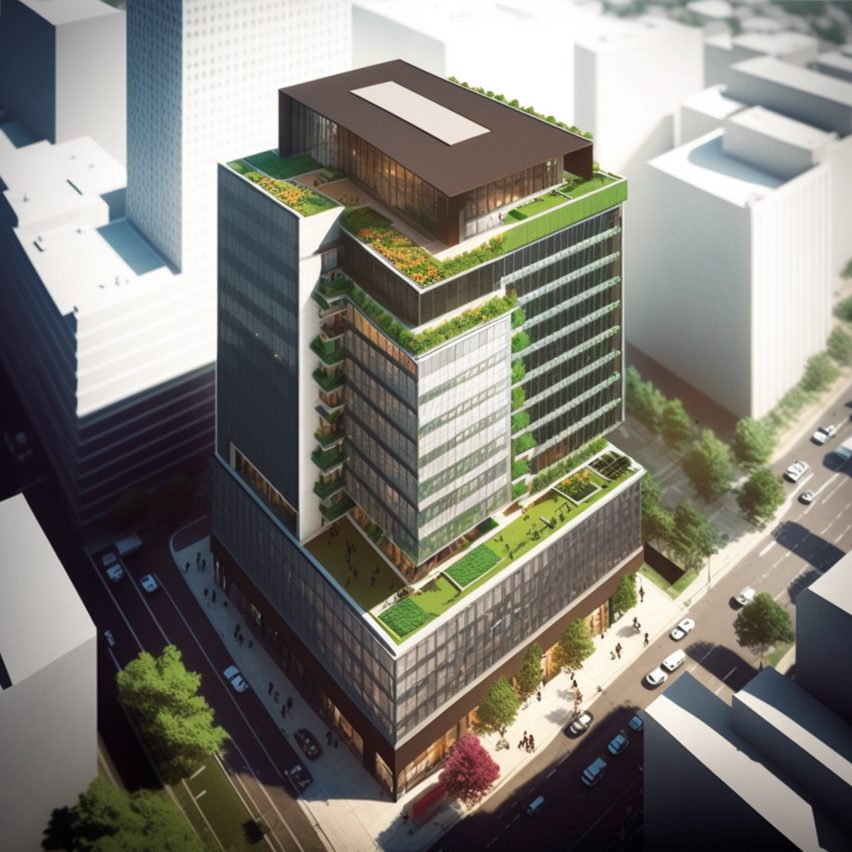
ChatGPT's ability to "remember" things from the discussion to inform its answers makes the technology particularly interesting, according to Lynch.
"It understood that everything we've done to that point was a building block for the next step, in the same way that architects and designers work," he said.
"It was keeping a record and it was modifying the record if there were constraints added later on if it felt there needed to be modifications. So to me that was just very exciting, because it was suddenly a tool that works to a level that current architecture tools don't have."
However, ChatGPT did make multiple errors during the process. For example, for the layout of the building it suggested offices on the lower floors with multifamily housing above and then more office space again higher up.
"That would never happen," said Lynch. "That's not efficient."
"After some back and forth with the bot it made its correction and moved forward," he added. "Later on in the conversation, I said, 'let's assume that the developer was very interested in this idea of split office space, would you reintroduce it?' And it said, 'No, because considering what we've talked about previously, it makes more sense to do it this way'."
In other cases, it would forget about constraints and have to be reminded of them, or forget about its own ideas and have to be asked to reintroduce them.
"Starting point to spur design ideas"
Nevertheless, Lynch believes that the technology could have important applications for architects.
"I'm super excited that I can use it as a starting point to spur design ideas, in the same way that colleagues of mine in the firm can go into a conference room and charrette out ideas at the beginning of a project," he said.
"That is a great way to get past any sort of designer's block, to look at precedents in a super fast way that saves you hours of research time."

He predicted that specialised AI chatbots will start to be integrated into software commonly used by architects.
"It just saves you so much time and it makes things so much more efficient, in the way that computer-aided design made things more efficient."
Since Lynch began his work with ChatGPT, OpenAI has launched a new, more powerful version of the model known as GPT-4 that is currently only available to paid users.
"A little naive" to assume profession at risk
Some have issued warnings over AI's potential to put architecture jobs at risk – including ChatGPT – but Lynch is optimistic about the technology.
"I think it's a little naive to assume that an advanced technological leap is going to suddenly put your profession at risk," he said.
"There are countless moments in time where we've had technological leaps that have enhanced the design profession for the better."
AI could lead to a new wave of architectural innovation, Lynch argued.
"When computer design started in the 1960s and '70s there was a fear that the craftsmanship of the architect or the pen-to-the-paper that really led to true inspiration was going to be gone, but we had a huge renaissance of different architecture styles that came about," he said.
"I think we're going to see that again. It's putting design into a different user's hands, and that doesn't mean that architecture is at risk, it means that it's going to be viewed a bit differently, and there are going to be people who come in and start to play around with it," he continued.
"And maybe they're not trained in architecture, but that's okay, it doesn't concern me, because if they're using these tools the trained architect has the edge."
Hickok Cole is now carrying out further research to establish whether ChatGPT could be used to assist with actual projects.
Lynch is exploring how responses from AI models differ based on how requests are phrased in an attempt to get more consistent results.
Zaha Hadid Architects principal Patrik Schumacher revealed in April that the studio is already using AI image generators to help come up with early ideas for projects.
The images were created by Hickok Cole using Midjourney.
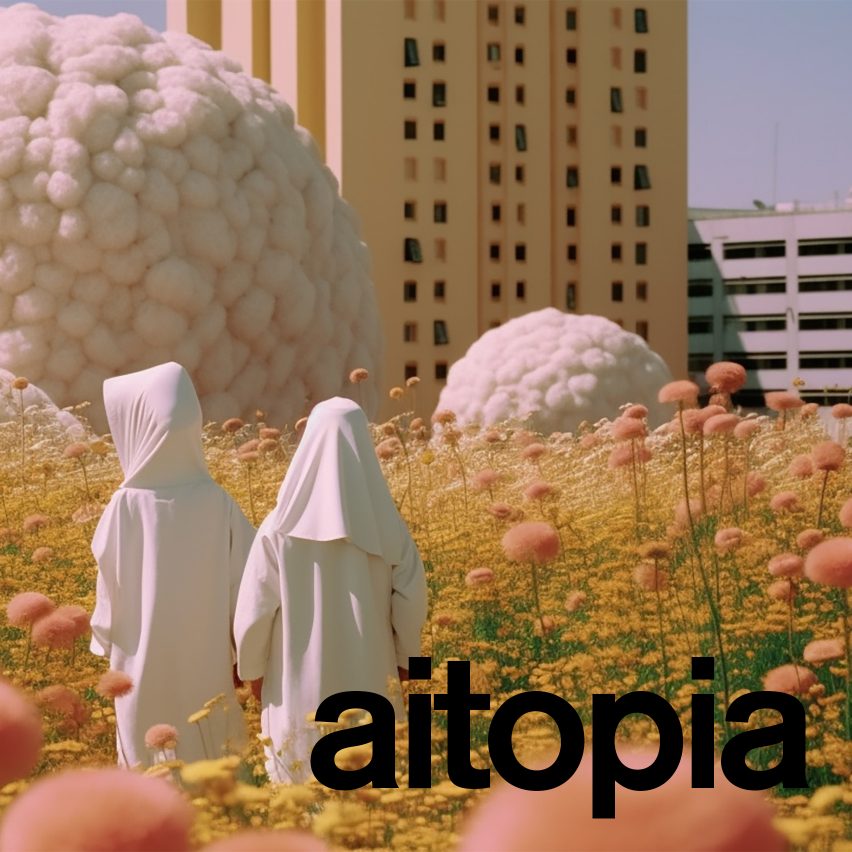
AItopia
This article is part of Dezeen's AItopia series, which explores the impact of artificial intelligence (AI) on design, architecture and humanity, both now and in the future.